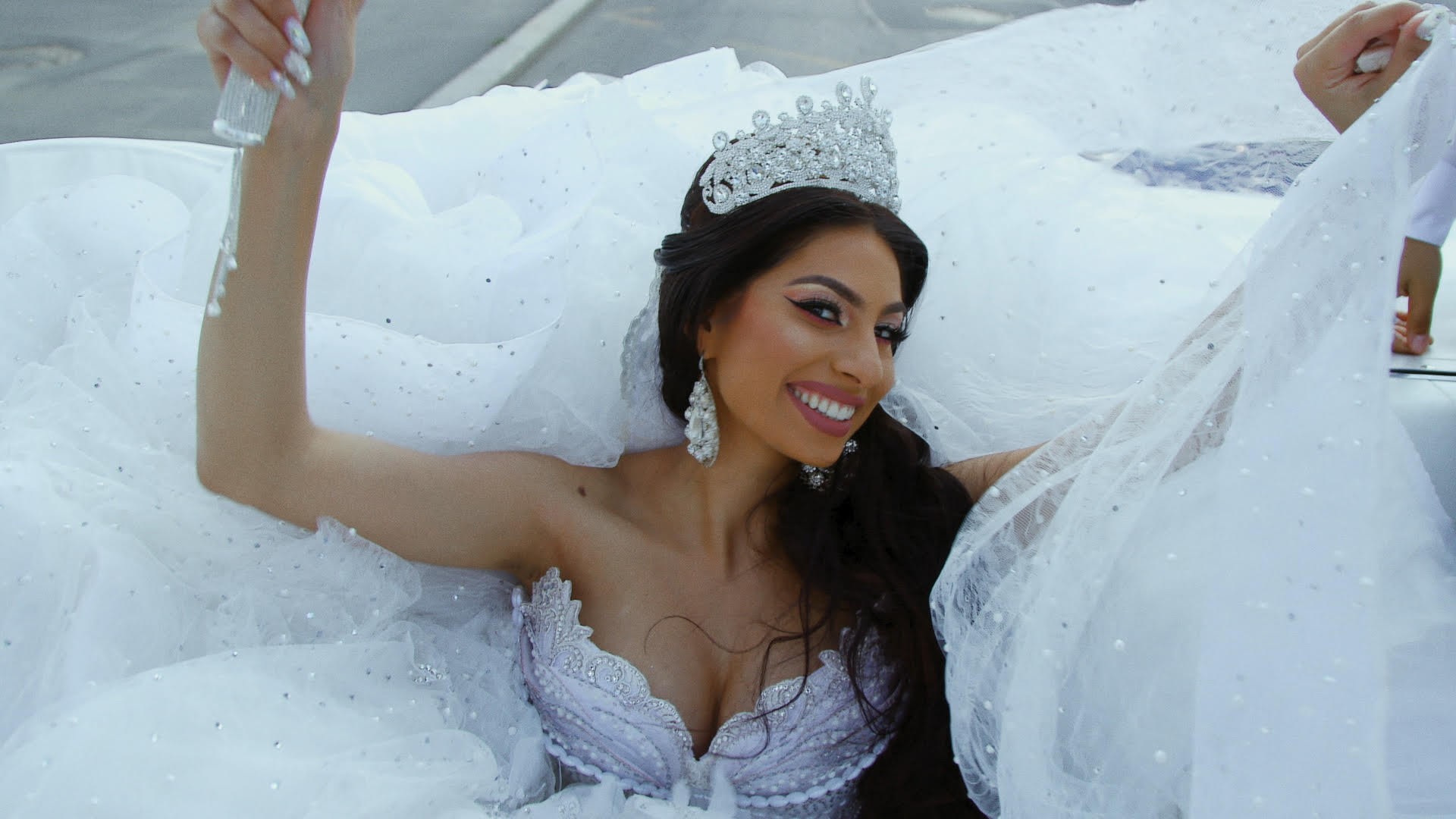Unwellness is a new column that looks to alternative, new-age therapies to ease the age-old anxiety of existence.Everyone seems anxious these days, and almost everybody has an idea for what will cure it: journaling! Ghosting people! Herbal witch remedies! Apps! But I’ve never been the type of person to lie in bed at night, plagued by a diffuse overall sensation of panic. My anxiety flares up in reaction to specific issues: things people have said to me which I sweat over for hours, email chains that I am desperately avoiding answering, and, most pressingly, news stories that I have speed-read that suggest that the world is several months away from total environmental apocalypse.
Advertisement
Thanks to the 24-hour news cycle, I’ve found it easier than ever to access information that only serves to tip my catastrophizing brain into a spiral of anxiety. (I don’t recommend Googling "will my house survive rising sea levels.") I’m not the only one who is this affected by the news. In the UK, the Mental Health Foundation notes on its website: "Today, avoiding the 24-hour news cycle is much harder than deciding not to watch it on TV. Smartphone and social media culture keep us connected to the shifting currents of world and home political affairs, making it much harder to maintain boundaries and take healthy time out from anxiety-inducing news content when we need to."Of course, there’s plenty of things you can do to assuage your anxieties about global warming—the Mental Health Foundation suggests turning off your notifications and "picking your battles." These are common-sense solutions, but that’s not what this column is about. If we’re dealing with the extreme anxieties that come with living in 2018, we’ve got to go extreme.That’s why I wanted to find out if cryotherapy could cure my anxiety about global warming.
Watch: An Arranged Marriage Ceremony with Romania's Teen Witches Listen: I was raised a Taoist, all right? Taoism is all about balancing yin and yang; hot and cold. Anybody who’s ever had fried chicken slapped out of their hand by an overbearing Asian mom because it was “heaty” will understand. Could submerging myself in extreme cold help counteract my brain being on fire from thoughts of fiery climate-pocalypse? It was worth a shot.
Listen: I was raised a Taoist, all right? Taoism is all about balancing yin and yang; hot and cold. Anybody who’s ever had fried chicken slapped out of their hand by an overbearing Asian mom because it was “heaty” will understand. Could submerging myself in extreme cold help counteract my brain being on fire from thoughts of fiery climate-pocalypse? It was worth a shot.
Watch: An Arranged Marriage Ceremony with Romania's Teen Witches

Advertisement
It’s a perfect autumnal morning when I visit SaiSei Cryo Studio in East London to undergo cryotherapy for the first time. The catch is that London has been baking in unseasonably hot weather for months, so the sudden drop in temperatures makes today feel even chillier than usual.
SaiSei owner and personal trainer Nyambe Ikasaya doesn’t make me feel any better. “The specific cold therapy we use here goes to -100 degrees Celsius [-148 degrees Farenheit] and below,” he says. “Really, really cold!” He laughs in an oddly reassuring way for someone who is about to plunge me into subzero temperatures.Cryotherapy is a catch-all term for any treatment that uses extreme cold for therapeutic purposes. SaiSei specializes in whole-body cryotherapy—hence the gigantic seven-foot chamber—as well as cryofacials, in which cold air is blasted at the face.
The cryotherapy chamber at SaiSei Cryo.
Advocates of whole-body cryotherapy say that it can speed up exercise recovery time, promote healing, and even improve quality of sleep. It was even credited with helping a minor English football team—Leicester City—win the Premier League in 2016. The science behind it is a little murkier. The US Food and Drug Administration has not cleared or approved any whole-body cryotherapy devices to treat any specific medical conditions, with one spokesperson declaring: “We found very little evidence about its safety or effectiveness in treating the conditions for which it is being promoted.”
Advertisement
Still, that hasn’t stopped celebrities like Lindsay Lohan and Jennifer Aniston from giving it a try. Ikasaya says he hops into his hulking cryotherapy chamber—which looks more like something from a Doctor Who prop cupboard—once a week. “If I’m doing a training program that’s really intense and I want to recover quicker, I’ll be doing one a day.” He adds, “I find that I recover much quicker when I’ve done exercise. I have some inflammation in my back from a back problem, and when I do cryotherapy, it goes down. I find that I sleep better.”What about the psychological benefits? “It definitely will help you with feeling a lot more clarity. That’s what a lot of people come out saying: ‘I feel energized, but at the same time, calm.’”
Temperatures in the chamber reach -100 degrees Celsius.
It has been a long time since I felt either energized without the help of caffeine or calm without needing to knock myself out with something. I would like very much to feel both at the same time (even if it seems slightly like a contradiction in terms), so I put on a bath robe and enter the walk-in chamber.An enormous hum fills the room as Ikasaya closes the door behind me. As I hand the robe over to him—now I’m just in my underwear—I suddenly remember that the last time I even remotely experienced subzero temperatures was when I went on holiday to Norway as a teenager with my mom, where, at one point, I simply laid face-down on the bed and refused to leave the hotel because it was too cold.
Advertisement
Now, I have to withstand two and a half minutes of temperatures that would kill a human being at longer intervals. The cool air starts getting circulating in the pod and immediately turns into a icy vapor and oh my god it is colder than I even thought possible. It’s feels like a full-body ice burn—like I’ve been booted out of a tent on Everest naked.
As I press myself up against the padded interior of the closed chamber to get away from the freezing jets of air, I try to think about hot things that otherwise cause me deep existential despair: polar bears overheating and dying on a melting ice floe, orangutans perishing as their habitat in Borneo is slashed and burned for palm oil; all the inane, repetitive conversations I had with English people during the heatwave that mainly consisted of, “Wow, it’s hot today, huh?” “Yes, very.”Nope, impossible. I start shivering, yelping, and laughing nervously, which is maybe a sign that I retain a good sense of humor in the face of death. All I can focus on is the timer on the chamber that tells me how many seconds are left of this torture. When my time is finally up, I stumble out and start trying to shake some sensation back into my limbs. I touch my upper leg and almost have an out-of-body experience when I realize they’ve gone completely numb. Touching them feels like touching a refrigerated ham hock, not an attached body part.
“Personally, I feel very calm and focused,” Ikasaya says of his own response to treatment. “You know how you can be focused, but [on edge]? This is really different.” I wouldn’t say I feel any more clarity or focus, but it does feel like the volume of the internal noise in my brain has been turned down by a couple of notches. Maybe that’s because I’m more worried by the twitching of random muscles in my butt, like they’re trying to shake off the cold.As I leave SaiSei, I keep zipping and unzipping my jacket because I’m not totally sure what the temperature actually is. Am I hot or am I cold? It occurs to me that in 12 years' time—the deadline that scientists have set for mankind to reduce emissions and avert climate change disaster—questions like this will become a luxury. We’ll all either be boiling or shivering in our respective disaster-proofed homes. At least I’ve found out that I’m fully capable of surviving the latter.
